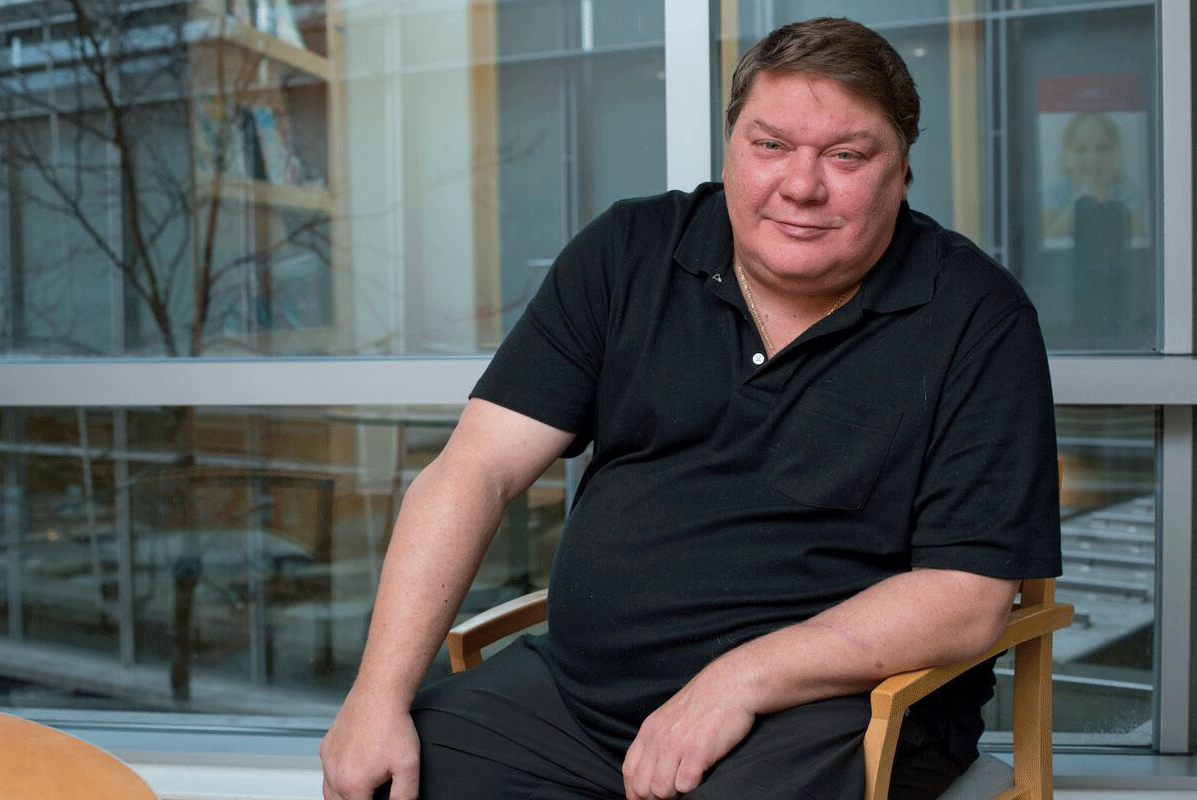“I am so thankful for everyone who helped along the way, from the wound center nurses, to the foot doctors, to Dr. Brotman O’Neill and the operating room”

Trenton resident is spared major amputation thanks to vascular surgery
No one wants to feel pain. Still, it’s a necessary part of life. Pain is the body’s way of telling us something is wrong.
For people with diabetic peripheral neuropathy, the body’s ability to feel pain is not reliable—and the absence of that pain can be a great danger.
David, a Trenton resident who has lived with diabetes for years, experienced the danger of peripheral neuropathy first hand when a burn on his foot nearly led to an amputation of his leg.
Trouble Feeling…
To understand David’s story, it’s important to understand diabetic peripheral neuropathy. Diabetes is an unforgiving disease that impacts numerous body systems at the same time. Neuropathy is just one example of the tremendous affect diabetes can have on the body.
“Diabetic peripheral neuropathy is characterized by bilateral sensory loss, numbness and tingling and pain in the hands, feet, fingers and toes,” explains Alissa Brotman O’Neill, DO, RPVI, FACOS, board certified vascular surgeon.
Other symptoms include:
· Wasting of the muscles of the feet or hands
· Sharp pains or cramps
· Weakness
That tingling and pain in the extremities means the nerves in the hands and feet are not working the way they should be. As a result, an injury to the affected area can be difficult to feel and difficult to heal.
“While we are still learning why and how exactly the neuropathy occurs,” recently named NJ Top Doc Dr. Brotman O’Neill explains. “We do know chronically elevated blood glucose levels and vascular disease are believed to play a role in nerve damage.”
The combination proved to be exactly what led to David’s injury one chilly afternoon.
“I decided to lie down for a bit and turned on an electric fireplace to warm my feet. I fell asleep and didn’t realize my feet ended up directly on the heater, which caused a bad burn on my right foot,” David explains.
When he got up, David didn’t realize anything was wrong until he saw a trail of blood on the floor where he’d been walking. He hadn’t felt the pain.
…Trouble Healing
Dr. Brotman O’Neill explains David’s cold feet could have been a result of the neuropathy, or vascular disease in his legs. Thermal injuries such as his are relatively common in populations with peripheral neuropathy.
David sought care for the wound on his foot right away at RWJ Hamilton’s Center for Wound Healing. The wound care team tried a variety of medical and therapeutic measures to resolve the wound, but David’s condition continued to become more problematic.
Circulatory testing revealed vascular disease was causing limited blood flow in David’s legs, hindering the wound from healing.
“I could see my right great toe was black, and the toe next to it was black,” David recalls. “They called for a vascular consult, but my foot doctor talked to me to prepare me for the possibility I could lose my leg.”
David has a brother who had an amputation above the knee from a diabetic ulcer, and he understood the weight of the situation. When Dr. Brotman O’Neill came in to meet with him, David could only hope for the best.
“Without revascularization to restore blood flow, wounds cannot heal. Infection also contributes to a non-healing wound. In David’s case, aggressive measures needed to be taken to save the limb,” explains Dr. Brotman O’Neill.
“I performed 'endovascular revascularization' surgery to both legs to help his wounds heal and I was confident this procedure could save his limbs and feet.”
Dr. Brotman O’Neill was right. Two of David’s toes were too badly damaged to save. However, the revascularization procedure, which restores proper blood flow to the limb, along with good wound care management following the procedure, saved David’s leg from amputation.
These days, David is back on his feet and “100 percent” fully functioning.
“I am so thankful for everyone who helped along the way, from the wound center nurses, to the foot doctors, to Dr. Brotman O’Neill and the operating room,” David says.
“They were able to give me the best I could have asked for in the situation.”